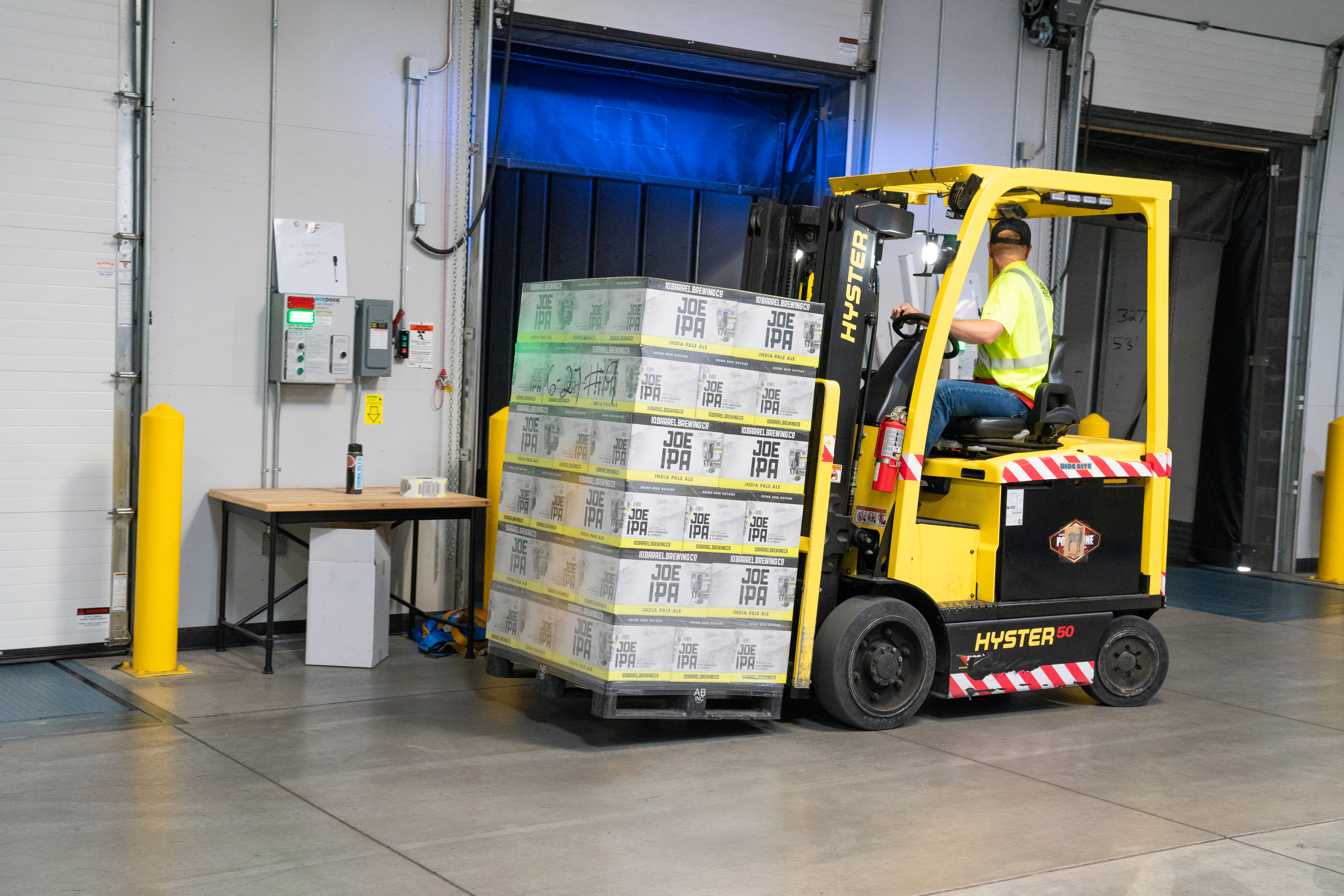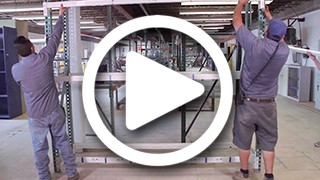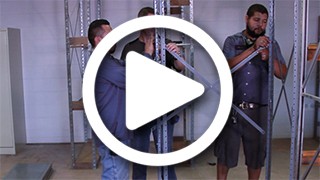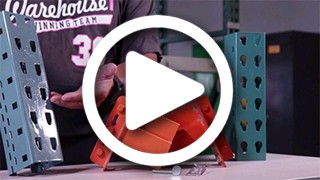How to Manage a Warehouse - Checklist for Success
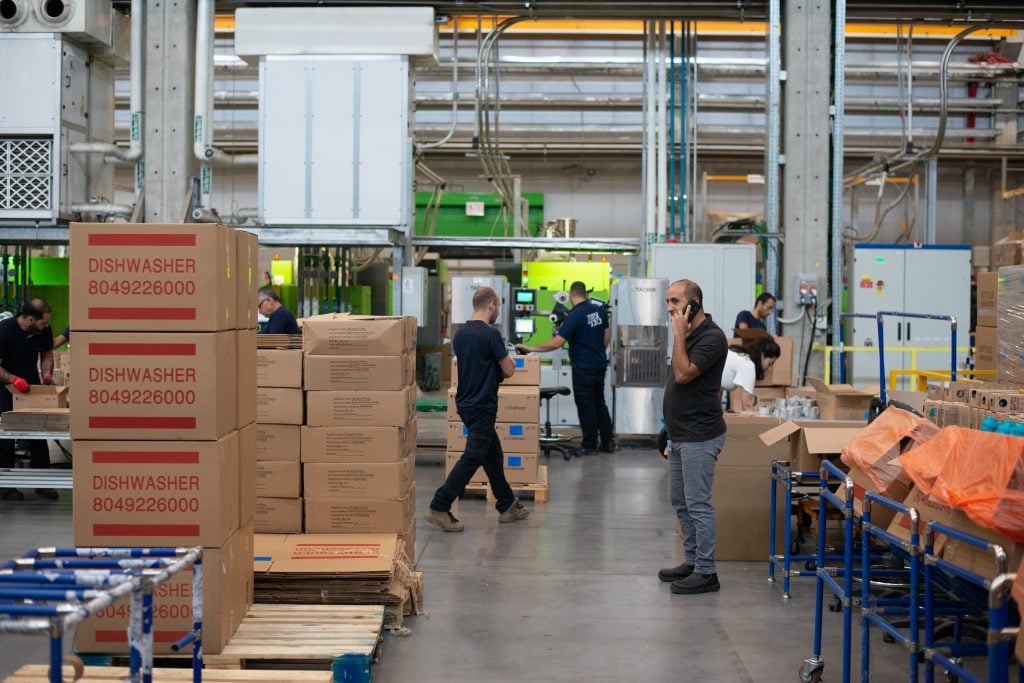
As taskmaster of warehouse duties and responsibilities, your core role is to have an efficient facility that meets the needs of your supply chain. Your company may be storing raw materials that will later be shipped to manufacturing plants, parts and components that will be assembled later, or finished products that will go to end consumers. Efficient warehouse management practices boost your company’s capabilities throughout the year.
So, how do you run an efficient and successful warehouse? There are many different areas that must be managed: inventory, equipment, workers, layout, and safety are key aspects to address. Also, be aware that your warehouse manager duties could vary based on whether you will be stepping into the role at an existing warehouse or taking charge of a new facility.
- Existing warehouse - all safety procedures, employee training and picking processes are already established. While these aspects may change or be improved upon, the core duties are already in place.
- New facility - you will be working from scratch and must determine the best layout for receiving, storing and shipping inventory. Purchasing or leasing warehouse equipment, material handling machines, storage racks, lighting and other equipment will top the list. You will also have to hire, train and retain workers who will be new to the operations. Lastly, it will be up to you to develop the operational processes and policies that will be implemented throughout the warehouse.
Check out our warehouse duties checklist below to learn how to best organize inventory and promote a safe environment. Then, find the products to manage your warehouse here at Warehouse1.
The Importance of Warehouse Safety
With shipments arriving, being placed on shelves, and inventory getting picked and packed to be delivered to distribution and fulfillment centers, the warehouse floor area can become a hectic place. Boxes may be left in aisles and powered material handling equipment such as forklifts and scissor lifts may be left running and unattended. No one wants an injury!
Preventing accidents that can harm your workers and shut down your facility is essential. Do this by focusing on safety and addressing the following.
1. Clean and Organized Workplace Environment
Safety programs should provide a set of guidelines and best practices to ensure all merchandise is efficiently catalogued into warehouse data systems and placed systematically upon warehouse shelves. Empty boxes, cables, plastic ties, and other objects should be cleared from aisles and floor space to prevent workers from tripping over items or having the items get caught up around equipment wheels. The Occupational Safety and Health Administration (OSHA) addresses common worker safety practices for warehouse environments - study it.
2. Employee Training
All employees need to be trained regarding safety policies and accident prevention and remediation. These policies should go into detail regarding best practices for warehouse operations as well as what role employees will have in case of accidents. The policies need to also outline how accidents should be reported to supervisors so they can address issues quickly. In addition to training employees, workers and staff should be trained on the correct use of all personal protective equipment, the common operation of equipment machinery, and standard equipment upkeep.
3. Equipment Maintenance and Repair
Equipment maintenance and repair schedules should be created to ensure all material handling equipment is functioning properly and efficiently at all times. Equipment that has malfunctioned should be placed out of service immediately to prevent accidents. Workers tasked with fixing equipment should perform inspections after repair to ensure the machines are functioning properly and that there are no other problems before allowing it to be placed back into operation.
4. Auditing Safety Procedures and Protocols
Institute internal audits on a periodic basis to evaluate working conditions and safety devices. Check to ensure warning signage, emergency protocol and accident rules are clearly visible and can be seen and read by workers. Evaluate safety devices to ensure they are in proper working order including fire extinguishers, alarms, sprinkler systems and light warning systems. You should also inspect fire exits and stairs to make sure they are clear of debris and accessible for employees.
Warehouse Organization
Organizing your warehouse layout allows workers to quickly pick and pack inventory for shipments. When a warehouse is not organized correctly, inventory can become misplaced, as disorganization can lead to data inaccuracies within warehouse management systems. For example, you may end up ordering too many products that cannot fit onto shelves, or get stuck with obsolete products that never went out because the inventory was hidden behind boxes and racks.
Even if you are taking on warehouse supervisor duties of an existing facility, it may not be organized in an efficient manner and could be improved with the right layout, system and equipment.
Planning Your Space
Go over the warehouse layout to make sure its setup is conducive to productive work output. Evaluate existing racking systems and aisle space to ensure there is enough room to both store equipment and for workers to move around while easily accessing inventory.
You can set up “pick zones” to group inventory based on sales demand and order fulfillment patterns. Then, you can rearrange inventory during different sales periods or seasons so that more commonly ordered products are grouped together and closer to packaging and shipping operations.
Also plan out the space to store and/or service warehouse equipment so that it can be used quickly.
General Organization
Having a place for all inventory is essential, as you can keep floors clear of pallets and products that could become damaged. The type of shelving and racking systems to select should be based on how much floor space is available, the type of product to be stored, and the height of the warehouse itself.
For example, if the warehouse will store small parts such as bolts, nuts and screws, stackable bins and bin cabinets may be used to house them. When storing cables wrapped on different sized spools, a reel rack offered by Warehouse1 would allow convenient access to the wire or cable.
Shelves and racking systems come in all sizes to accommodate the type of inventory you’re storing. From boxes for document records to industrial shelving, you first need to determine the height and width of both the shelves and their products. Then, space the shelves out to provide enough room for workers and equipment to reach the items they hold.
Keep in mind that shelves and racks come with weight ratios to adhere by - you do not want to place too much inventory and surpass the recommended weight, which could result in the rack collapsing or tipping over.
How to Manage Warehouse Inventory
Once you have selected the right shelving and racks, as well as determined the setup of the warehouse, you need to learn how to manage a warehouse operation effectively. Your warehouse manager responsibilities should include the following.
1. Lean Inventory Practices
“Lean inventory” is a warehouse methodology in which you store only enough products needed for operations. This method helps to reduce waste and lowers operation costs, as you won’t end up with too many products that could become obsolete before they’re sold.
2. Inventory Management/Tracking System
Inventory management and tracking systems offer greater visibility and transparency regarding the movement of your products. From the moment they arrive at the dock, items are barcoded and scanned into network systems. You then have real-time information on where the inventory is placed on shelves, when it is picked and packed by workers, and how it travels to end destinations when shipped out.
3. Visual Inspections
Always perform visual inspections of inventory when it arrives at the receiving dock. Any damages should be reported so that followup accountability takes place.
Some inventory, such as chemicals, food, or temperature-sensitive products, may be impacted by physical warehouse environments. For these items, you should implement a periodic inspection schedule to check for leaks or other damage that may develop during long-term storage.
4. Labeling Products
Always invest in labeling systems for products, especially those that may have similar functions, to distinguish inventory on shelves. Also, take the extra step of labeling shelves and picking zones to help workers (and new hires) locate products quickly.
Keeping Your Warehouse Clean & Sanitized
While you should aim to clean and declutter your warehouse space when deliveries come in to clear away empty boxes and pallets from the floor, you should also schedule a regular deep cleaning for after hours to sanitize and disinfect the work environment.
This deep cleaning schedule can be broken down per week, per month or annually depending on how often the warehouse is used and the scope of operations taking place. You could have in-house workers perform the cleaning, or hire an outside company.
Your cleaning schedule could be scheduled alongside routine inspections to ensure all areas are well lit, there are no roof or product leaks, and that fire hazards are addressed. Doing so will help to reduce clutter throughout operations.
Additional Equipment Considerations
Your warehouse job responsibilities should also focus on ensuring the equipment types available to workers are those best suited for the job. Keep in mind, there may be times when automated floor processes could be introduced, such as a conveyor system like those available from Warehouse1. These innovations can help increase productivity and allow workers to focus on other tasks, as the conveyors automatically push inventory to designated areas for use or shipping purposes without any human labor needed.
Lifting equipment comes in a variety of sizes and functions, including powered scissor lifts or manual lifting tables for inventory or for workers themselves to reach shelving units. Before purchasing any lifting equipment, check out the height requirements, length, and width of the machines to match them with the layout of your warehouse shelves and aisles.
Do not forget that you can also incorporate equipment into loading dock procedures. To ensure forklifts can enter trailers without worrying about the gap between the warehouse floor and the truck, Warehouse1 offers dock boards and edge of dock levelers to help material handlers offload inventory safely.
Warehouse Supervisor Responsibilities
In addition to making sure your warehouse has the best operational equipment and safety features available, you need to hire the best employees and train them to your management standards and policies. Your responsibility as a supervisor is to effectively communicate each employee's role and to address any problems that may arise. Here are the other essential duties:
- Establish an interview process for hiring new employees.
- Provide the appropriate training materials and continual education so your staff is up to date on warehouse practices.
- Periodically provide performance reviews to talk about workers' strong points and advice regarding areas for improvement.
- Hold regular staff meetings to review warehouse operations and address any employee conflicts.
- Don’t be afraid to use incentives to keep your workplace productive and motivate employees to deliver above and beyond.
Other Considerations for Warehouse Management
Every warehouse setup will be different and based on whether you are storing products to use in your own company operations or if you are shipping products out to customers.
Whether your warehouse is a business-to-business (B2B) or business-to-consumer (B2C) operation, you need to do the following:
- Establish delivery, pick up, and shipping services, as well as any special packaging that may be required for certain products.
- Inspect your processes to look for gaps in service to improve customer satisfaction, which in turn will improve your bottom line.
- Coordinate deliveries with shipping partners or 3PL companies.
- Establish a return policy and how products will be picked up to be brought back to the warehouse.
Conclusion
Managing a warehouse has several key aspects that require development to ensure the facility’s operations are safe for employees, can handle inventory successfully, and have the right equipment on hand. If you are looking for products to assist you in your warehouse management adventure, contact Warehouse1 for more information or to receive a quote.


